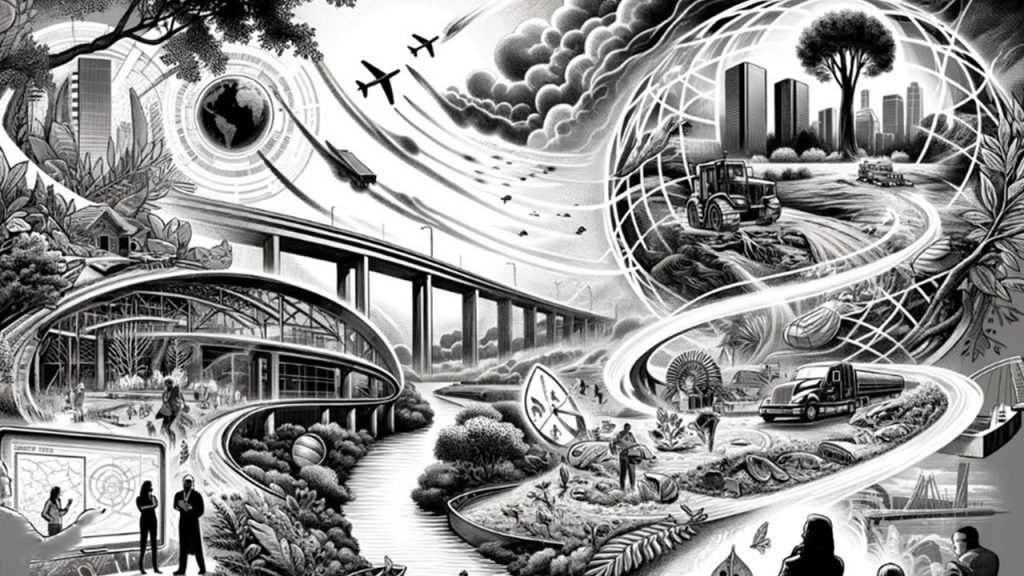
From script by Lou Cripps
The lifecycle-based Asset Management Plan was Penny’s solution to the issue of short-term thinking.
In particular, she wanted us all to look ahead at budget requirements for renewals – replacements and refurbishments of aging assets.
But planning and lifecycle thinking are needed for other challenges, too.
For me, the fundamental point is the importance of thinking ahead. Of being proactive rather than reactive, of exploiting what we already know about our assets to stop being surprised by things we can work out ahead of time.
In a week when many of us are trying not to think about WW3, we know we don’t know everything about the future. But we need to make better use of what we do know.
The problem, 40 years on, is that so many organisations don’t.
Here are just some of the questions I would wish – fairy godmother style – everyone to be able to give better answers to.
- 101, if we think we need to build some new infrastructure asset, what will it cost to maintain and operate it?
- What are the different realistic solution options – and what opportunities will we lose in choosing any of them?
- What’s the evidence that we have understood the problem and scoped our preferred option correctly? What else has to be considered in with the capital cost – like the cost of new facilities when we buy new electric fleet, for example?
- What costs and disbenefits should we also cost into the materials we choose, such as embodied carbon or damage to other communities?
- What costs and disbenefits will continue long after the physical asset is gone (think the loss of species or habitats, long-term damage to communities)?
- Do we really have any fact basis for the costs, risks and benefits of something new, as opposed to sustaining what we have?
All of these are elements of whole life cost modelling. Too bad many organisations still don’t even use basic lifecycle costs for their budgeting or strategies.
The underlying problem… is a system that doesn’t plan for the future. Is it lack of the right skills in the right place, or vested interests? Laziness??
One thing I am pretty sure is that it isn’t a lack of available information.
What do you think: just how bad, on a scale of 1 to 10, are our current infrastructure business cases?
Further good reading: Penny’s Infrastructure: we can afford to buy it, can we afford to keep it? Louise Hart, Procuring Successful Mega-Projects: How to Establish Major Government Contracts Without Ending up in Court. Joseph Berechman, The Infrastructure We Ride On: Decision Making in Transportation Investment.

Just a reflection on our own institutions.
I have been involved with the IAM on and off for almost 25 years. I attended Asset Management Council meetings and conferences (under different names) when I lived and worked in Australia in the 2000s. I have been impressed by the IPWEA since someone brought back a copy of the IIMM to the UK around 2001. My boss was instrumental in setting up the GFMAM.
These are just the most obvious AM institutions. (But shout out to Canadian AM networking here, too.)
They have not always been particularly friendly to each other, but at roughly 30 years old at their oldest, we seem to have developed some institutional maturity.
I was heartened to realise that, for all its limits – well delineated by Richard Edwards and others at the recent IAM UK conference – the revisions and new ISO 55000 documents involved hugely more people this time around.
The IAM itself has grown and now functions in more European and Asian countries, as well as succeeding in the USA; it has a truly excellent CEO in Ursula Bryan. I love the IPWEA ‘Ask Your Mates’, the kind of practical support we need from out networking.
But perhaps the best sign of all was a workshop last month on ‘Peak Infrastructure?’. A room full of Asset Managers asking what infrastructure we really need. And how there is work still to be done to make a lasting difference. Changing national government policies not to incentivise (or give in to developers and construction companies) building new when we can maintain what we have.
All physical assets come at a cost, often a very steep one in impact on the environment and communities. We have to take the lead to make sure we understand costs versus benefits.
That’s the real question when we get together as Asset Managers.
*IAM: Institute of Asset Management, HQ in UK. IPWEA: Institute of Public Works Engineering Australasia. GFMAM: Global Forum on Maintenance and Asset Management, established by the IAM, Asset Management Council and others. Asset Management Council in Australia. Canadian Network of Asset Managers, plus Provincial AM networks such as AMBC and AMOntario.
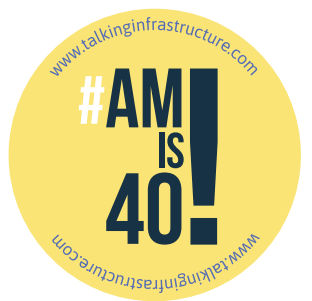
Come and meet Penny and Talking Infrastructure in person! Watch this space for additional details, but here’s the programme so far:
April 15 & 16 AMPeak, Adelaide. Penny and Ruth will be at AMPeak.
April 18, Stantec, Brisbane
April 19, PACoG, Brisbane. Asset Institute, QUT, 11am- 12.30, followed by lunch. Join Joe Mathew and Kerry McGivern along with Penny and Ruth to discuss what we’ve learnt in 40 years – and look forward to the next 40. Includes a look of what is happening with asset management internationally, in this big year for AM.
April 23, Blue Mountains City Council, Katoomba, 10am to noon. Seminar with Jeff Roorda on Blue Mountains City Council planetary health and disaster recovery experience, plus update on the new advocacy project underway by IPWEA Roads and Transport Directorate (IPWEA RTD – NSW/ACT), on Lessons Learned from Disaster Recovery, to assist NSW Councils work with Local, Strate and Federal Government Agencies.
April 24, Sydney event, Dawes Point. 6-10pm Harbour View Hotel, 18 Lower Fort Street, Dawes Point, NSW 2000. Using the recent experiences of the Blue Mountains City Council, Talking Infrastructure is holding an event in central Sydney to call for urgent changes in all of our asset mindsets and tools to ensure planetary health, biodiversity and climate change resilience. Meet with Penny, Jeff, Gregory and Ruth, plus local IPWEA. Food provided thanks to AMCL.
April 30, IPWE, Melbourne. Presentation by Penny. Penny and Ruth will be at IPWE until May 3. There will also be a dinner out in Melbourne for TI friends and colleagues – please let us know if you would like to join us. And bring along your copy of Penny’s book to get signed!
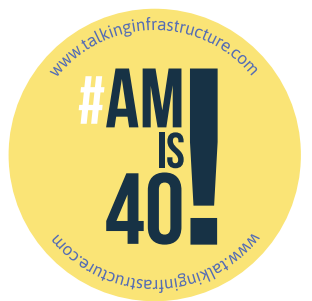
If you are planning to attend our Sydney celebration, please RSVP to: amis40@talkinginfrastructure.com so we can keep an eye on numbers – limited to the first 60! Event is free, includes food and discussion with Penny Burns and Jeff Roorda and a whole heap of old friends and colleagues.
Full update of the 40th year celebration events shortly!
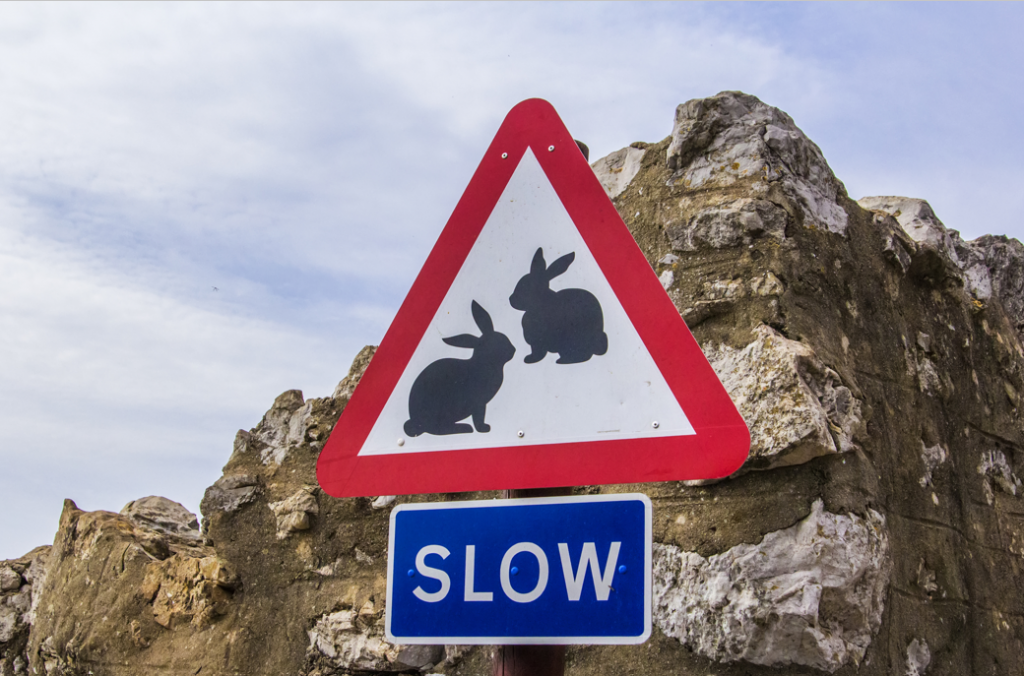
Photo 63254580 © Liliia Epifanova | Dreamstime.com
2023: surely the year for harder questions about the impact of our infrastructure on biodiversity.
For example, researchers in Idaho built a fake road to test out the impact of freeway noise on migrating birds.
“A third of the usual birds stayed away… those that stayed paid a price,” writes Ed Yong in his fabulous book Immense World on animal senses. The noises drowned out the sounds of their predators, so the birds had to spend more time looking for danger and less for food, so they put on less weight and were weaker for their migrations – which take every bit of energy the birds have.
And this didn’t include actual road effects from headlights, exhaust fumes, polluting run-off.
As Ed Yong says, more than 83% of continental USA lies within a kilometre of a road. There is nowhere else for the birds to go.
We have options to do something about this in our infrastructure, in a year we’re meant to be ‘building back better’.
Just replacing blue or white LEDS with red in, for example, parking lot lighting cuts down the impact of night light on insects. Sound-absorbing surfaces and barriers; slowing down traffic; quieter vehicles – all can immediately reduce noise pollution for animals such as owls and mice who depend on sound to catch or avoid being caught.
If 80% of humanity live under light-polluted skies and two-thirds of Europeans live in the noise equivalent of constant rain, it’s not great for people. But what Ed Yong brings out so brilliantly is how often we don’t even think about the different and miraculous sense worlds of other species, of whales and manatees and frogs and birds, and how very much worse it can be for them.
Is this the year to start taking seriously a problem we’ve only just begun to realise?
Immense World, Ed Young, 2022 – how other animals sense is truly mind-blowing.

Hedgerows in the Lincolnshire countryside near the small village of Aslackby. Photograph: Steven Booth/Alamy
Not everywhere in the world uses hedges. But Britain has about 500,000 km of hedgerow – despite losing half of them since 1945, as industrial scale farming has taken hold here. One of my very earliest memories is being driven through a patchwork, hedged landscape in the middle south west of England. And it was magic.
Hedges are not just fence-equivalents, worth the investment for that alone. They also store carbon, of course, as linear (if metre high) woodland.
“Hedgerows help slow down the runoff of water, guarding against flooding and soil erosion, and act as barriers to help prevent pesticide and fertiliser pollution getting into water supplies. Studies show they can improve the quality of air by helping trap air pollution.
“They are perhaps the largest semi-natural habitat in Britain, refuges for wild plants and corridors for wildlife to move through, often in barren farmland landscapes.” Paul Simons, the Guardian, 18 Aug 2021
For these reasons, the UK Climate Change Committee recommends planting 40& more hedgerows by 2050.
They are only semi-wild, of course, because they are trees manipulated (‘laid’) by humans, and so require effort, and skill. They are very definitely infrastructure.
And magic.
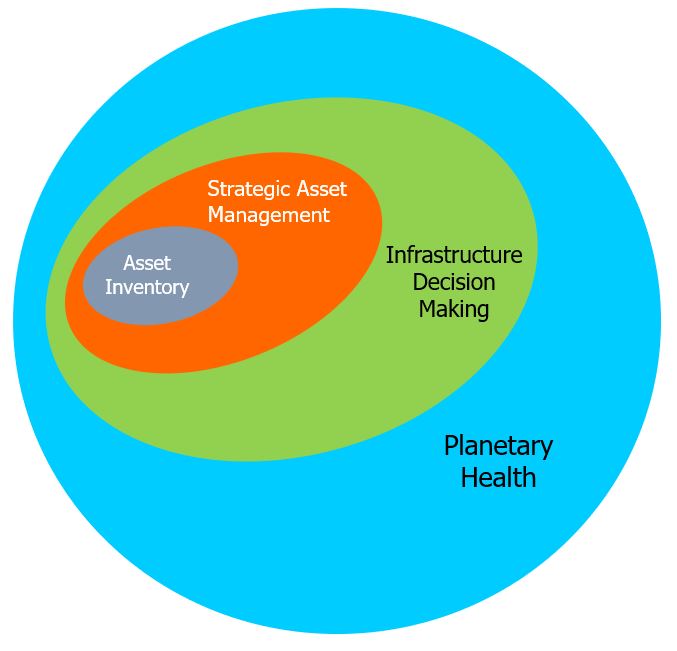
In a previous post, there was a diagram showed how each of our ‘waves’ could also be conceived of as particles, embedding and building on each other. .This is our latest version, to capture the ideas of ‘grey assets’, as opposed to green and blue assets.
For the last 40 years the economic focus has been on growth.
And so infrastructure decisions have also focused on growth. But now this growth focus is changing as we realise the damage we are causing – and so asset management and infrastructure decision making needs to change, too.
We are now at a pivot point.
We have been at pivot points before. This is what Talking Infrastructure’s THE ASSET MANAGEMENT STORY is now documenting.
At each pivot point in Asset Management (the beginning of each wave), we have expanded our understanding of the world we operate in. Starting from simply maintaining and recording in Wave 1, we moved, in Wave 2 or Strategic Asset Management, to using this information to optimise decisions concerning our existing portfolios.
Then, in Wave 3, we look to take on a bigger role, infrastructure decision making, where we go out into our communities to work on whether the size and shape of our portfolio is what it needs to be. Wave 4 extends our understanding of our asset portfolios to the impact we are having on society and planetary health, and actively seeks to improve these impacts. The task in Wave 4 is to make all infrastructure decisions ‘future friendly’.
Wave 4 is the challenge that Talking Infrastructure was surely set up to address.
It is our most critical pivot point yet in asset management. This is the challenge that Talking Infrastructure CEO, Jeff Roorda, is leading at the Blue Mountains City Council where he is Director of Economy, Place and Infrastructure services. The city’s focus is on Planetary Health and Social Wellbeing. And we will be reporting what the City, and others with whom it is working, learns so that everyone can move in a saner direction than we may have done in the past.
If this interests you, watch this space, for a new series of blogs about infrastruture and biodiversity.
And, of course, become an active part of the dialogue on Talking Infrastructure.

Recent Comments